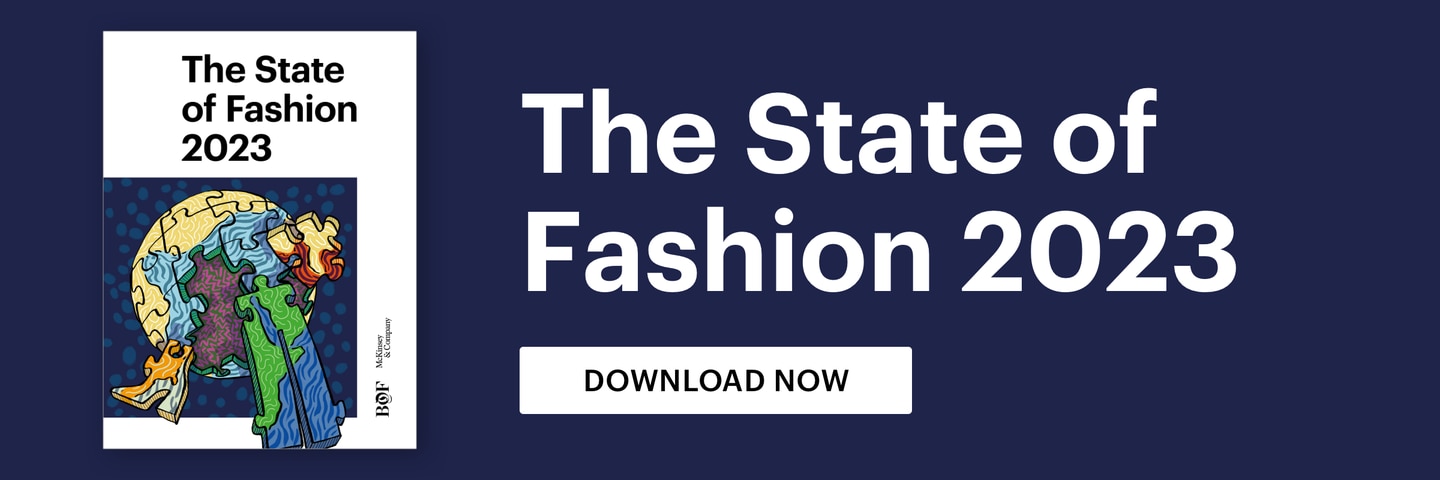How Web3 Is Shaking Up Digital Marketing
Over the past year, non-fungible tokens, or NFTs, emerged as a promising new avenue for fashion brands to draw in shoppers and build membership communities, letting them interact in ways that are arguably deeper and more meaningful than simply having an email address.
A brand can engage customers who hold their NFTs — whether purchased or claimed free after buying a physical product — by rewarding them with free items or exclusive access to gated products or experiences, using the crypto wallet containing their digital tokens as a unique identifier. NFTs linked to real-world goods can also serve to authenticate products and act as a gateway to related services, such as repairs.
NFTs are part of the world of web3, the nascent internet based on blockchain technology. Web3 proponents say they offer a way forward for fashion’s digital marketers, who are contending with a number of challenges in reaching new audiences, including stricter data-privacy rules, rising customer acquisition costs and social media’s rapid content cycle, to name but a few.
NFT technology is still young, so the web3 user experience can be clunky, and NFT buyers, who are a niche in the broader market for now, often judge tokens by whether they can be flipped for a profit. It’s also still to be seen how useful NFTs can be for introducing a brand or its products to audiences it isn’t already connected with — a top priority for digital marketers — and even if brands can build a community, it may require careful nurturing to thrive.
But some argue the days of cheaply buying attention online are over, and it’s time brands begin building an approach in line with this new reality.
“Marketers are going to have to learn this new playbook, where attention is more earned than bought,” said Brian Trunzo, the metaverse lead for the Polygon blockchain. “In web3, there’s a more pure way of speaking to a customer by incentivising them — by providing digital assets and benefits to them through NFTs.”
Community Building With NFTs
Adidas was an early leader in fashion to embrace NFTs, partnering with influential web3 names Bored Ape Yacht Club, Gmoney and Punks Comic to release a collection of 30,000 “Into the Metaverse” tokens in December 2021. Each cost .2 ETH (Ether), or about $800, at the time. Generating revenue wasn’t the main point though for the German sportswear brand.
“It was to launch a new community, a new membership model,” said Erika Wykes-Sneyd, co-founder of Adidas’ web3 studio. (Adidas also shared the revenue from the NFT sales with its partners in the project.)
The brand has given its NFT holders exclusive physical products such as a tracksuit and beanie and recently allowed them to vote on the colour of an upcoming release (orange and bright pink were the choices). Most of the community activity happens in a server on the chat platform Discord dedicated to the project with about 60,000 members. Wykes-Sneyd said they plan to involve NFT holders more in the coming months as collaborators and co-creators, not just customers.
Adidas’ relationship with this community is different than the usual brand-shopper dynamic, largely because members are financially invested.
“These are truly stakeholders at this point,” Wykes-Sneyd said. “They’re rooting for us, trying to support the success of this project, and they want to see its success. And if they don’t, they’re going to let us know by selling and showing us the floor prices going down.” (Floor price refers to the lowest cost for an NFT on the secondary market.)
So far the project has been successful in her view, and prices for Adidas’ NFTs on the secondary market suggest customers are still interested. As of October 2022, they were selling for around $700 on the marketplace OpenSea, which is below their initial dollar-equivalent cost but qualifies as fairly stable given the year’s market turmoil that has sent cryptocurrency and NFT values plunging. Wykes-Sneyd emphasised, however, that Adidas is focused on long-term goals for its project and the community involved, not fluctuations of the market.
Prada has also used NFTs to build deeper relationships with customers, though it’s taken a different approach to distributing them. The Italian brand allows shoppers to claim them for free when they purchase physical pieces from its limited-edition Timecapsule collections, which release online for a short period each month. All of the NFT-linked drops so far have sold out.
The NFT holders congregate in a Prada Discord server with roughly 5,600 members. In September 2022, one Timecapsule NFT owner won a trip to Milan that included an invitation to Prada’s Spring/Summer 2023 show, a tour of Fondazione Prada (the company’s contemporary art and cultural institute) and other perks. Later in the year, NFT holders could attend the next “Prada Extends” event, a celebration of local culture and music, this time taking place in Miami.
The NFTs give Prada a “higher level of intimacy” with its community base, Lorenzo Bertelli, Prada Group marketing director and head of corporate social responsibility, wrote in an email.
“Web3 presents a unique opportunity to enrich our existing customer relationships and also to engage new and diverse communities,” Bertelli wrote. “We envisage our NFT programme as forming an increasingly important component of our customer relations and community engagement strategies.”
Members of the crypto community tend to be the biggest audience engaging with these NFT projects, but they’re not the only ones. Prada’s NFT holders range from “much cherished long-time Prada devotees, to curious newcomers, to web3-native participants,” according to Bertelli.
As for Adidas, it made sure to bring a number of its established customers in, setting aside 8,000 of its NFTs in the initial sale for users of its Confirmed app, where it releases hyped products to its most engaged fans. Many of them were new to the crypto world, Wykes-Sneyd said.
Great Web3 Expectations
Managing a community and its expectations isn’t easy. Bertelli said Prada has put “considerable effort” into expanding its capabilities in web3 and plans to continue investing to support more NFT and community engagement projects.
Other NFT projects have encountered backlashes when they have failed to meet expectations. RTFKT, a maker of virtual fashion and NFTs, publicly apologised to its community members when one of its hyped product drops encountered technical glitches that left customers waiting for hours trying to claim the items. Holders of Adidas’ NFTs have become restless when the brand hasn’t provided regular updates on what they can expect, airing their complaints directly to Adidas in Discord.
“We have a full-time moderation team of seven managing this community,” Wykes-Sneyd said. “That for us is unfiltered, front-row access to what people are feeling and thinking, whether that’s the good, the bad or the indifferent.”
Of course, brands can use NFTs without having to build an explicit membership group. They could just treat them as a way to push incentives and rewards to the crypto wallets of holders to occasionally grab their attention and build loyalty.
One challenge all NFT creators face, though, is making sure customers have a reason to care about their NFTs in the first place. Ideally the tokens should have some reason to exist in themselves, according to Pierre-Nicolas Hurstel, co-founder and chief executive of Arianee, an NFT platform for luxury and fashion brands.
“The utility of an NFT should be native. It’s a proof of something, so the question is: do you have a good reason to distribute a proof of something to someone? A proof of attendance, participation, ownership,” Hurstel said.
Part of Prada’s aim with its project is to offer a point of view only it can provide. Just as with the physical products they offer and their brand identities, brands need to distinguish themselves and give consumers a reason to want to associate themselves. As Polygon’s Trunzo put it, “The closer a brand is to a commodity, the more difficult it will be to use web3 tools to capture the attention of would-be customers and then maintain them as fans.”
But if brands are able to entice shoppers to want their NFTs, it arguably provides the foundation for a deeper relationship than just collecting an email during checkout or the shopper following the brand on Instagram. Hurstel described NFTs as “zero-party data,” as opposed to the third-party data gathered and sold by other platforms or first-party data a brand collects itself. It represents a relationship the customer has purposefully opted into, which also has the benefit of precluding data-privacy concerns, Hurstel noted.
He and others in web3 imagine a time in the future when a customer’s crypto wallet becomes their public profile, with the NFTs they’ve collected from purchases and attending events becomes the way a brand identifies their interests. To reach this point will take time and much wider adoption of crypto wallets, however.
“This conversation around blockchain, solving for identity and empowering consumers to take control of their identity [where] they can opt in, it sounds ideal,” said Trevor Testwuide co-founder and chief executive of Measured, a digital marketing analytics platform. “Deploying that right at scale, there’s a lot of work to do to get there.”
Brands like Adidas and Prada are among those that see enough potential to start now.
This article first appeared in The State of Fashion 2023, an in-depth report on the global fashion industry, co-published by BoF and McKinsey & Company.









Gloss